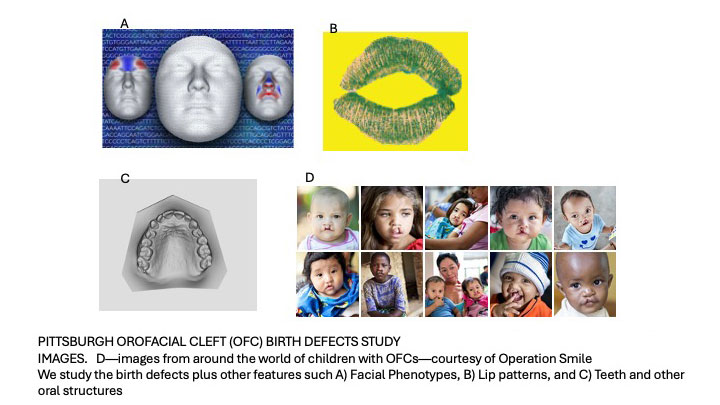Data releases: Oro Facial Cleft and Oral Health Disparities
Published 02 July 2025
We are excited to announce three new data releases on deep phenotyping of orofacial cleft and discovering oral health disparities in Appalachia:
Oral-Facial Cleft Families: Phenotype and Genetics (OFC1)
Principal Investigators: Mary Marazita and Seth Weinberg (University of Pittsburgh)
DOI: https://doi.org/10.25550/5A-FJBJ
Pittsburgh Oral Facial Cleft Studies: Extending the Phenotype of Nonsyndromic Orofacial Clefting (OFC2)
Principal Investigators: Mary Marazita and Seth Weinberg (University of Pittsburgh)
DOI: https://doi.org/10.25550/56-ES6P
COHRA2: Factors Contributing to Oral Health Disparities in Appalachia
Principal Investigators: Betsy Foxman (University of Michigan), Mary Marazita (University of Pittsburgh), Daniel McNeil (West Virginia University), John Shaffer (University of Pittsburgh)
DOI: https://doi.org/10.25550/4Y-4SK4
Description:
Two comprehensive datasets from the University of Pittsburgh project Genetics, Genomics and Deep Phenotyping of Orofacial Clefts are now available on FaceBase. The OFC1 dataset comprises data from 29,369 individuals across 29 global sites, while OFC2 includes 24,754 participants from 6 international locations. Led by Drs. Mary Marazita and Seth Weinberg, these studies aim to identify genetic loci and other etiologic factors associated with nonsyndromic orofacial clefts (OFC), including cleft lip (CL), cleft palate (CP), and CL with or without CP (CL/P). Through deep phenotyping—including 3D facial imaging, dental assessments, intraoral photography, and psychosocial and medical histories—these datasets provide richly detailed profiles of individuals with OFC, their relatives, and unaffected controls. The integration of phenotypic data with genomic analyses (SNP genotyping and whole genome sequencing) enables refined gene-mapping and exploration of broader trait associations.
The overarching goal of the Center for Oral Health Research in Appalachia (COHRA2) study is to delineate the covariation between genetic, behavioral, family, and community factors associated with oro-dental disease and tooth loss in rural and urban northern Appalachian families (West Virginia and Pennsylvania). The COHRA2 study investigated factors that contribute to the disparately increased rates of dental caries in children living in Northern Appalachia from birth through age ten years. Specifically, the study focused on the microbiological community that develops in babies before they have teeth, as well as genetic and behavioral/environmental factors of both mothers and babies that predispose children to caries after their teeth erupt. The COHRA2 study was a longitudinal, family-based cohort study with one group with data for 2972 Subjects from 829 households. You can also find the COHRA1 related data set here.
All of the above datasets are restricted-access human data. To gain access to this data, you must first go through the process outlined here.


